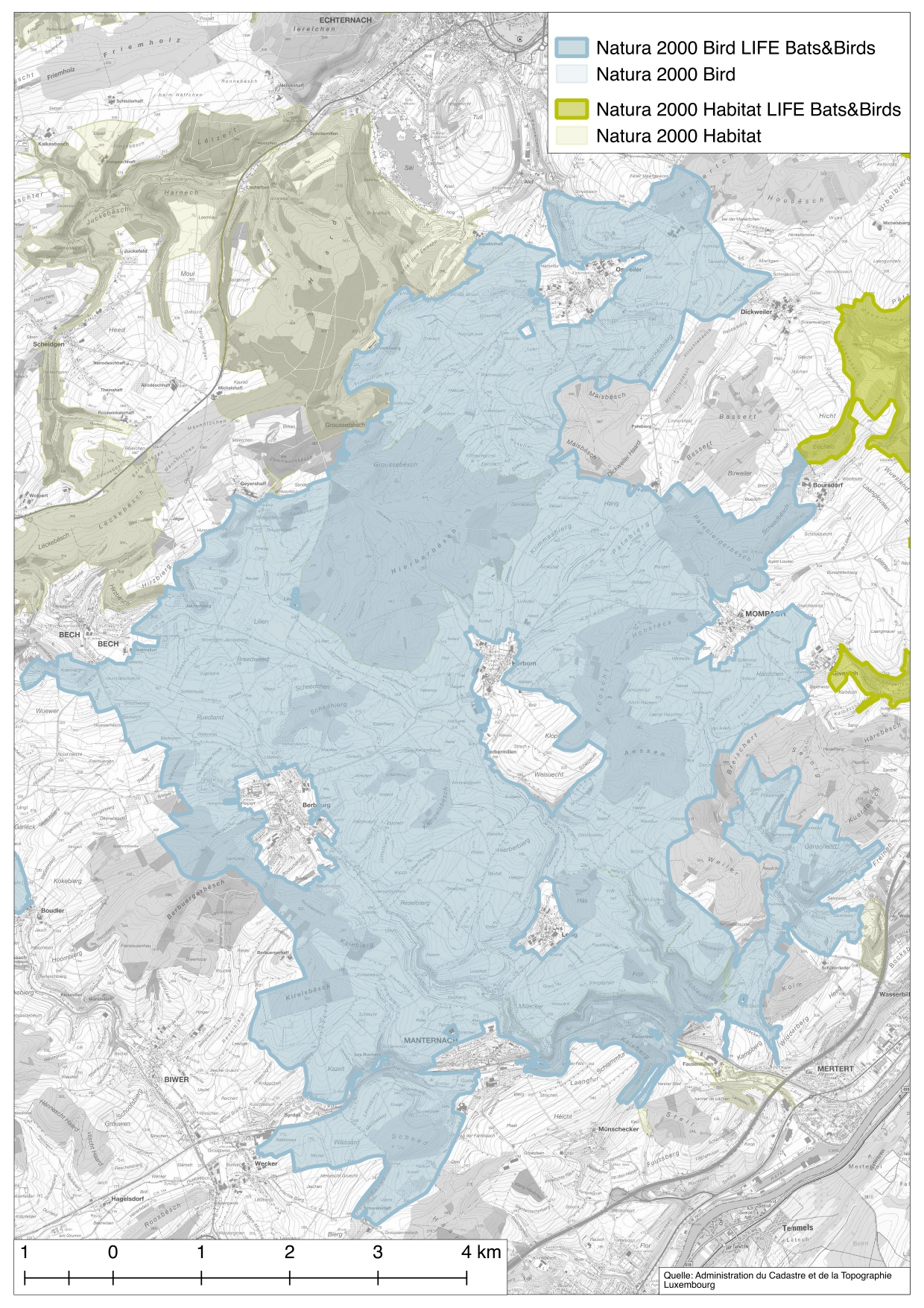LU0002016 Région de Mompach, Manternach, Bech et Osweiler
The geology of the bird sanctuary of Mompach, Manternach, Bech and Osweiler changes from north to south. In the north, heavy Keuper soils dominate, in the south, layers of the Upper Muschelkalk increasingly occur. The region is mainly characterised by agricultural land. Intensively used grassland and arable land make up the majority of the area. However, orchards, wet grasslands and other extensively used land can also be found in the area. The diversity of habitats in the area creates a mosaic that meets the needs of many bird species, including the target species of the Life Bats & Birds project. The bird reserve mainly contains smaller watercourses, such as the Wuelbertsbaach, the Lelligerbaach, the Sernigerbaach and the Lannebaach. The orchard meadows, which are still numerous, are mainly located in the immediate vicinity of the villages. In addition to the open land biotopes, there are also several forest biotope types in the area, including Tilio-Acerion forests of slopes, screes and ravines and Medio-European limestone beech forests of the Cephalanthero-Fagion. Several forest massifs, such as the Hierberbësch, Manternacher Fiels, Aessen and Pafebiegerbësch, provide hunting grounds for bats in particular, including the ciliated bat and the greater horseshoe bat, as well as forest species. The varied open countryside still provides good conditions for Great Grey Shrike, Red-backed Shrike, Wryneck and Little Owl. Other rare bird species also still find relatively good conditions here, although these may be altered by the intensification of agriculture. According to the SDF (Standard Data Form), 35 bird species protected under Annex I of the Birds Directive occur in the bird sanctuary Mompach, Manternach, Bech and Osweiler.

